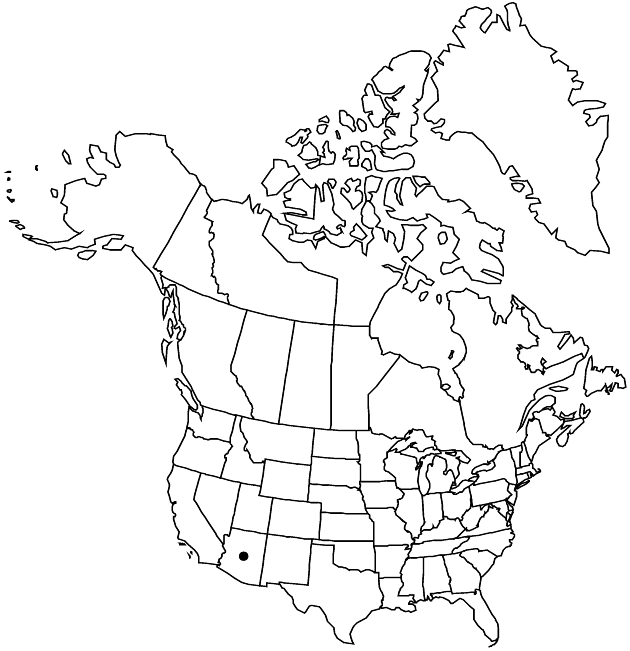Ambrosia deltoidea
J. Arnold Arbor. 45: 421. 1964.
Shrubs, 30–80+ cm. Stems erect. Leaves mostly alternate; petioles 5–12+ mm; blades deltate to lance-deltate, 12–25(–35) × 5–12(–18) mm, bases cuneate to truncate, margins toothed, abaxial faces ± densely tomentulose (between veins), adaxial faces sparsely tomentulose, glabrescent. Pistillate heads clustered, proximal to staminates; florets 2–3. Staminate heads: peduncles 0.5–3(–5) mm; involucres ± cup-shaped, 4–8 mm diam., tomentulose; florets 12–30+. Burs: bodies ± fusiform to globose, 3–4 mm, usually stipitate-glandular (little, if at all, tomentulose), spines 20–30+, scattered or on distal 1/2, ± subulate (the proximal basally flattened), 1–3 mm, tips usually straight, sometimes uncinate. 2n = 36.
Phenology: Flowering Feb–May.
Habitat: Sandy washes, benches
Elevation: 200–1000 m
Distribution

Ariz., Mexico (Baja California, Sonora).
Discussion
Some specimens are intermediate for the characteristics that distinguish Ambrosia deltoidea and A. chenopodiifolia. The type of A. deltoidea may be better treated as conspecific with that of A. chenopodiifolia.
Selected References
None.